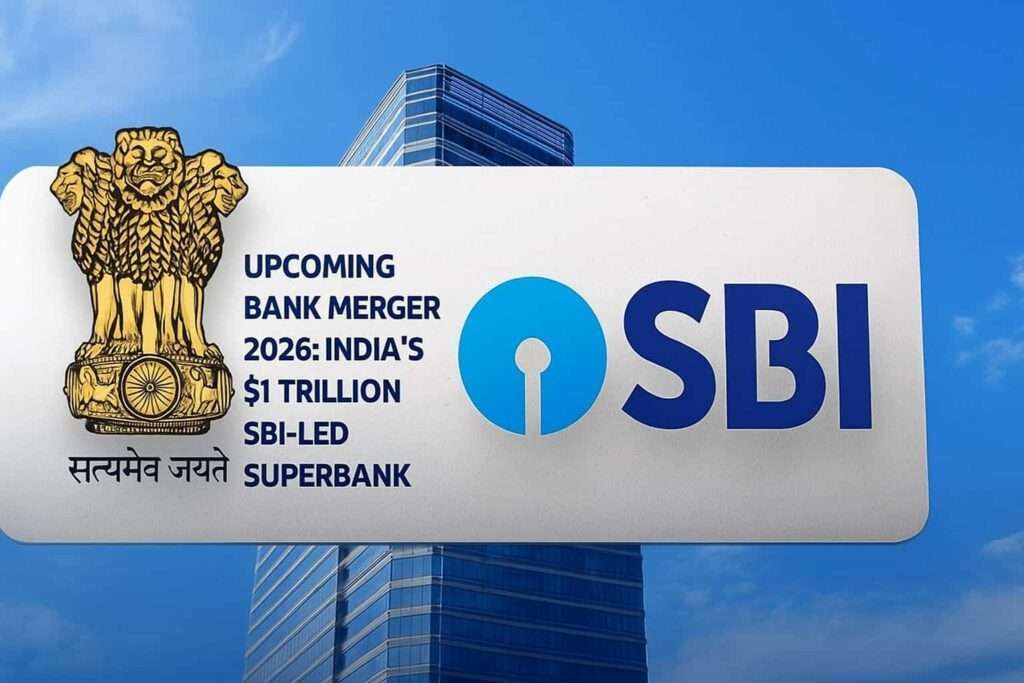November 8, 2025 – The State Bank of India (SBI) has already earned multiple milestones in its Q2 and 2025, from a total business of Rs. 100 trillion to a market capitalisation of $100 billion. But now, India’s largest bank could be headed for its biggest transformation yet.
According to multiple reports, the Government of India and the Finance Ministry are exploring a 2026 consolidation plan that could see smaller public sector banks merge into SBI. Nirmala Sitharaman said: India is now creating more big banks, which means world-class banks. The goal: to build a $1 trillion-asset “SBI Superbank” capable of competing with the world’s largest financial firms. such as ICBC, Mitsubishi UFJ, and DBS.
On the Hindubusinessline.com public poll, upto 80% people support the idea to make SBI bigger.
The 2026 Vision: Building a Global-Scale SBI
The government’s focus is clear — to create globally competitive, technology-driven Indian banks. In this phase, the merger would strengthen SBI’s base by combining it with smaller PSBs that already share operational or regional alignment.
According to early fintech experts’ discussions and a few trusted sources, the most probable merger candidates with SBI are:
- Bank of Maharashtra (BoM) – A strong retail deposit base in western India, as per its name, especially in Maharashtra.
- Indian Overseas Bank – Presence in South India, with global branches.
- UCO Bank – Eastern India reach, trade finance strength
These three together could lift SBI’s total assets beyond ₹80 lakh crore, crossing the trillion mark by FY26–27.
SBI’s Projected Scale After 2026 Merger
| Bank Name | FY24 Total Assets (₹ Lakh Crore) | Projected FY26 Assets (₹ Lakh Crore) | Contribution to SBI’s Total |
|---|---|---|---|
| State Bank of India (SBI) | 62.5 | 70.0 | — |
| Bank of Maharashtra | 3.1 | 3.6 | +3.6 |
| Indian Overseas Bank | 3.8 | 4.2 | +4.2 |
| UCO Bank | 3.5 | 3.8 | +3.8 |
| Total Combined Assets (Projected Value) | — | 81.6 lakh crore (around $980 billion) | ≈ $1 trillion |
(Source: RBI, Bank Annual Reports, Economic Times Estimates 2025)
Why It Makes Sense
SBI already leads India’s banking system in business volume, digital reach, and profitability. The merger would only strengthen its base, giving it a bigger deposit pool, a stronger loan book, and a wider network across every region.
With ₹100 trillion in total business, ₹20,000 crore quarterly profit, and 1.7% gross NPA ratio, SBI’s fundamentals are the strongest they’ve ever been.
And since 98.6% of its transactions are digital, integrating new banks under SBI’s platform like YONO would be smoother than ever.
Key benefits expected:
- Unified digital platform (YONO) across merged banks. Also, SBI try to launch new YONO 2.0 in 2026.
- Larger deposit base and lower cost of funds
- Better global credit ratings and capital access
- Simplified branch and compliance structure
The Digital Edge
SBI’s biggest strength today isn’t just its size — it’s its technology.
Over 64% of new accounts in FY26 were opened through YONO, and most services — from loans to mutual funds — are already online.
This digital backbone allows SBI to scale fast, integrate easily, and serve millions more without adding the old brick-and-mortar costs.
EaseMoney Point of View
The 2026 merger plan isn’t about fixing weak banks. It’s about creating a stronger SBI — a bank that can stand among the world’s top 25.
SBI has already proven that public sector banks can perform like private ones when they focus on fundamentals and digital innovation.
If the plan goes ahead, it won’t just make SBI larger — it will make Indian banking louder, faster, and more confident on the global stage.
What It Means for India
SBI’s 2026 goal to become a $1 trillion superbank is not just a headline or rumour — it’s a sign of how far Indian banking has come. The new AI add contributing highly to making a big mark for india.
In 2025, after receiving global awards, SBI’s journey shows what focus, trust, and technology can achieve.
The next chapter? Not survival — scaling India’s banking power to the world level.
Covering reports –







